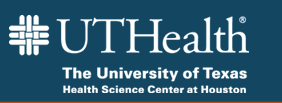Multi-dose Pharmacokinetics and Dose Ranging of Inositol in Premature Infants (INS-2)
| Status: | Completed |
|---|---|
| Conditions: | Bronchitis, Ocular, Women's Studies |
| Therapuetic Areas: | Ophthalmology, Pulmonary / Respiratory Diseases, Reproductive |
| Healthy: | No |
| Age Range: | Any |
| Updated: | 3/24/2019 |
| Start Date: | January 2010 |
| End Date: | September 2013 |
Phase II Randomized, Double-Masked, Placebo-Controlled, Safety, Pharmacokinetic, and Dose-Ranging Study of Multiple Doses of Inositol in Premature Infants
This pilot study is a randomized, placebo-controlled, clinical trial to measure changes in
blood and urine levels of inositol in premature infants at high risk for retinopathy of
prematurity (ROP) following repeated doses of inositol. Based on previous studies, the
premise is that maintaining inositol concentrations similar to those occurring naturally in
utero will reduce the rates of ROP and bronchopulmonary dysplasia in premature infants. The
objective is to evaluate pharmacokinetics, safety, and clinical outcomes of multiple doses of
three different dose amounts of myo-inositol (provided by Abbott Laboratories) in very low
birth weight premature infants. This study will enroll an estimated 96 infants at 17 NICHD
Neonatal Research Network sites. Infants will be randomly assigned to receive either 10 mg/kg
of 5% inositol, 40 mg/kg of 5% inositol, 80 mg/kg of 5% inositol, or 5% glucose given in the
same volumes and timings as the inositol dosage to maintain masking. Enrollees will receive
their assigned dose or placebo daily, starting within 72 hours of birth, and continuing until
they reach 34 weeks post-menstrual age, 10 weeks chronologic age, or until the time of
hospital discharge, whichever occurs first. The study drug will be administered first
intravenously; as the infants progress to full feeding, the drug will be given enterally
(orally or via feeding tube). Enrollees will be seen for a follow-up examination at 18-22
months corrected age. This pilot study is in preparation for a future Phase III multi-center
randomized controlled trial.
blood and urine levels of inositol in premature infants at high risk for retinopathy of
prematurity (ROP) following repeated doses of inositol. Based on previous studies, the
premise is that maintaining inositol concentrations similar to those occurring naturally in
utero will reduce the rates of ROP and bronchopulmonary dysplasia in premature infants. The
objective is to evaluate pharmacokinetics, safety, and clinical outcomes of multiple doses of
three different dose amounts of myo-inositol (provided by Abbott Laboratories) in very low
birth weight premature infants. This study will enroll an estimated 96 infants at 17 NICHD
Neonatal Research Network sites. Infants will be randomly assigned to receive either 10 mg/kg
of 5% inositol, 40 mg/kg of 5% inositol, 80 mg/kg of 5% inositol, or 5% glucose given in the
same volumes and timings as the inositol dosage to maintain masking. Enrollees will receive
their assigned dose or placebo daily, starting within 72 hours of birth, and continuing until
they reach 34 weeks post-menstrual age, 10 weeks chronologic age, or until the time of
hospital discharge, whichever occurs first. The study drug will be administered first
intravenously; as the infants progress to full feeding, the drug will be given enterally
(orally or via feeding tube). Enrollees will be seen for a follow-up examination at 18-22
months corrected age. This pilot study is in preparation for a future Phase III multi-center
randomized controlled trial.
Retinopathy of prematurity (ROP) is an abnormal growth of the blood vessels in the eye that
occurs primarily in very premature infants. Eye development occurs normally in the womb; in
infants born prematurely, however, the blood vessels must finish developing outside the
protective environment of the uterus. Retinopathy of prematurity (also known as retrolental
fibroplasia) is a leading cause of blindness and other vision impairments (myopia,
strabismus, and amblyopia) in children, both in developed and developing countries.
Inositol is a naturally-occurring sugar alcohol produced by the fetus and placenta and is
present in high levels in fetal blood throughout pregnancy in humans and other animals. Serum
levels fall rapidly after birth, although this fall is moderated in infants who receive
breast milk or fortified formula. Two randomized trials have shown that intravenous inositol
supplementation in the first week significantly reduced death, bronchopulmonary dysplasia
(BPD), and retinopathy. One study of enteral supplements (given orally or via feeding tube)
was less convincing, but also supported reduction of retinopathy.
This pilot study will evaluate changes in blood and urine inositol levels (half-life
pharmacokinetics) of multiple doses of myo-inositol (provided by Abbott Laboratories, Abbott
Nutrition Division) given to very low birth weight infants. The premise is that maintaining
inositol concentrations similar to those occurring naturally in utero will reduce the rates
of retinopathy and bronchopulmonary dysplasia in premature infants. Results from this study
will be used to select the dose for a large multi-center trial.
In this study, 17 NICHD Neonatal Research Network sites will enroll approximately 96 infants
at 12-72 hours of age. Enrolled infants will be randomly assigned to receive either 10mg/kg
of 5% inositol, 40 mg/kg of 5% inositol, 80 mg/kg of 5% inositol, or 5% glucose given in the
same volumes and timings as the inositol dosage to maintain masking. Inositol will be
administered intravenously until babies are feeding normally, at which time the same dose and
formulation will be administered enterally (orally or via feeding tube). Concentrations of
inositol will be measured in blood, urine, and milk received.
Stratification: Recruitment will be stratified by gestational age into infants born at 23 0/7
to 26 6/7 weeks gestational age and infants born at 27 0/7 to 29 6/7 weeks gestational age.
occurs primarily in very premature infants. Eye development occurs normally in the womb; in
infants born prematurely, however, the blood vessels must finish developing outside the
protective environment of the uterus. Retinopathy of prematurity (also known as retrolental
fibroplasia) is a leading cause of blindness and other vision impairments (myopia,
strabismus, and amblyopia) in children, both in developed and developing countries.
Inositol is a naturally-occurring sugar alcohol produced by the fetus and placenta and is
present in high levels in fetal blood throughout pregnancy in humans and other animals. Serum
levels fall rapidly after birth, although this fall is moderated in infants who receive
breast milk or fortified formula. Two randomized trials have shown that intravenous inositol
supplementation in the first week significantly reduced death, bronchopulmonary dysplasia
(BPD), and retinopathy. One study of enteral supplements (given orally or via feeding tube)
was less convincing, but also supported reduction of retinopathy.
This pilot study will evaluate changes in blood and urine inositol levels (half-life
pharmacokinetics) of multiple doses of myo-inositol (provided by Abbott Laboratories, Abbott
Nutrition Division) given to very low birth weight infants. The premise is that maintaining
inositol concentrations similar to those occurring naturally in utero will reduce the rates
of retinopathy and bronchopulmonary dysplasia in premature infants. Results from this study
will be used to select the dose for a large multi-center trial.
In this study, 17 NICHD Neonatal Research Network sites will enroll approximately 96 infants
at 12-72 hours of age. Enrolled infants will be randomly assigned to receive either 10mg/kg
of 5% inositol, 40 mg/kg of 5% inositol, 80 mg/kg of 5% inositol, or 5% glucose given in the
same volumes and timings as the inositol dosage to maintain masking. Inositol will be
administered intravenously until babies are feeding normally, at which time the same dose and
formulation will be administered enterally (orally or via feeding tube). Concentrations of
inositol will be measured in blood, urine, and milk received.
Stratification: Recruitment will be stratified by gestational age into infants born at 23 0/7
to 26 6/7 weeks gestational age and infants born at 27 0/7 to 29 6/7 weeks gestational age.
Inclusion Criteria:
- 23 0/7 to 26 6/7 weeks gestational age (48 infants) or
- 27 0/7 to 29 6/7 weeks gestational age (48 infants)
- 401 grams birth weight or larger
- 12-72 hours of age
Exclusion Criteria:
- Major congenital and intracranial anomalies
- Moribund or not to be provided continued support
- Seizures
- Suspected renal failure (oliguria <0.6 cc/kg/hr for >24 hours or creatinine >2.5
mg/dL)
We found this trial at
17
sites
University of New Mexico Founded in 1889 as New Mexico’s flagship institution, the University of...
Click here to add this to my saved trials
Emory University Emory University, recognized internationally for its outstanding liberal artscolleges, graduate and professional schools,...
Click here to add this to my saved trials
University of Alabama at Birmingham The University of Alabama at Birmingham (UAB) traces its roots...
Click here to add this to my saved trials
Tufts Medical Center Tufts Medical Center is an internationally-respected academic medical center – a teaching...
Click here to add this to my saved trials
Univ of Texas, Southwestern Med Ctr of Dallas The story of UT Southwestern Medical Center...
Click here to add this to my saved trials
Wayne State University Founded in 1868, Wayne State University is a nationally recognized metropolitan research...
Click here to add this to my saved trials
Click here to add this to my saved trials
Duke University Younger than most other prestigious U.S. research universities, Duke University consistently ranks among...
Click here to add this to my saved trials
7000 Fannin St
Houston, Texas 77030
Houston, Texas 77030
(713) 500-4472

University of Texas Health Science Center at Houston The University of Texas Health Science Center...
Click here to add this to my saved trials
Indiana University INDIANA UNIVERSITY is a major multi-campus public research institution, grounded in the liberal...
Click here to add this to my saved trials
University of Iowa With just over 30,000 students, the University of Iowa is one of...
Click here to add this to my saved trials
Click here to add this to my saved trials
University of Rochester The University of Rochester is one of the country's top-tier research universities....
Click here to add this to my saved trials
University of Utah Research is a major component in the life of the U benefiting...
Click here to add this to my saved trials
Click here to add this to my saved trials
Yale University Yale's roots can be traced back to the 1640s, when colonial clergymen led...
Click here to add this to my saved trials
Click here to add this to my saved trials











